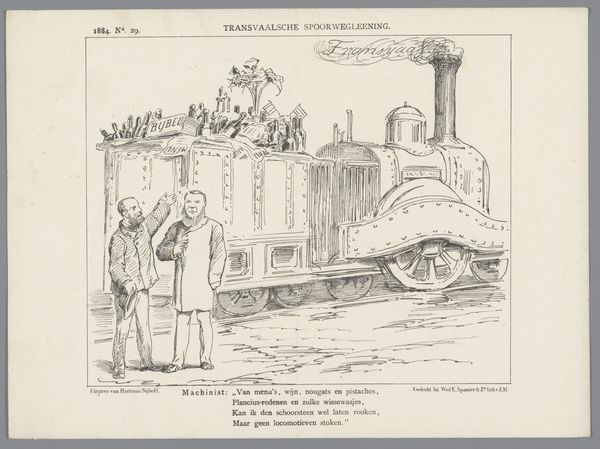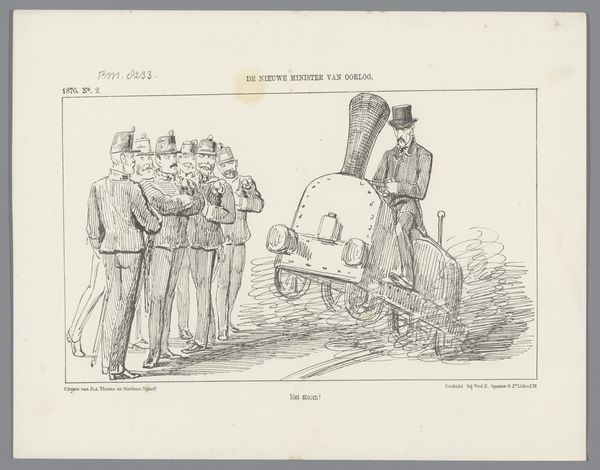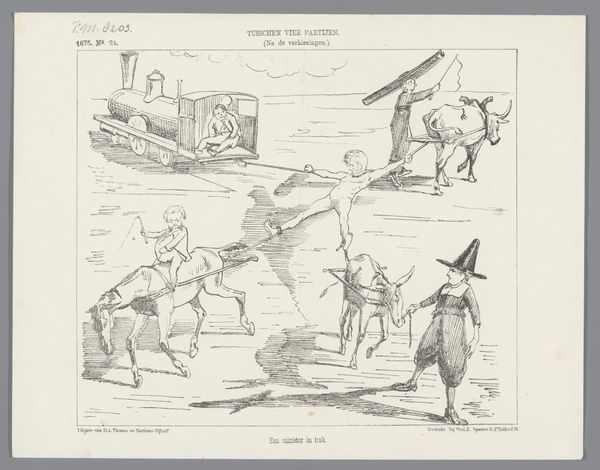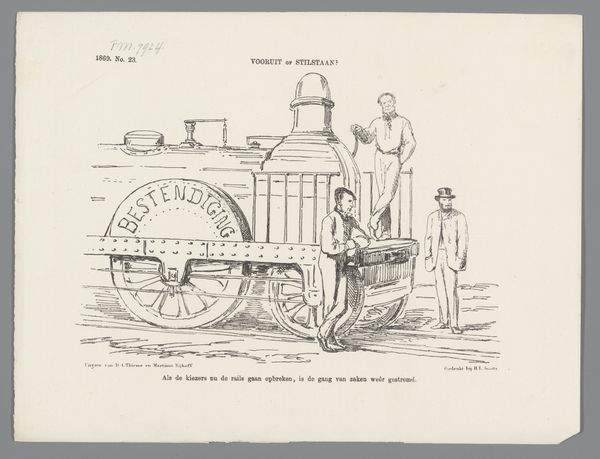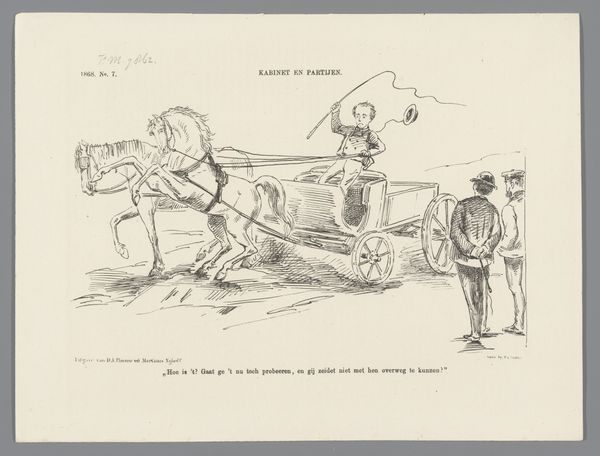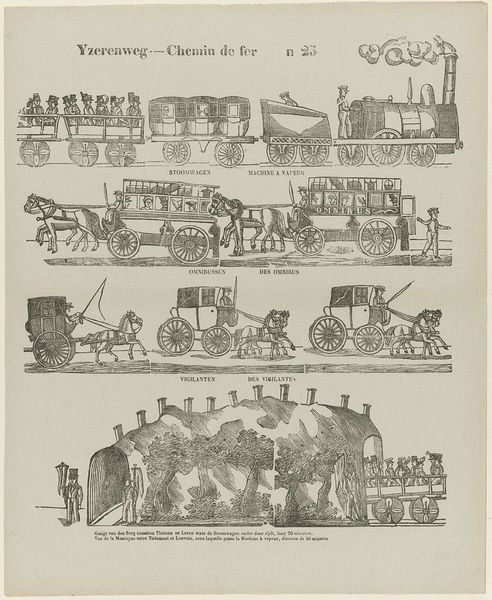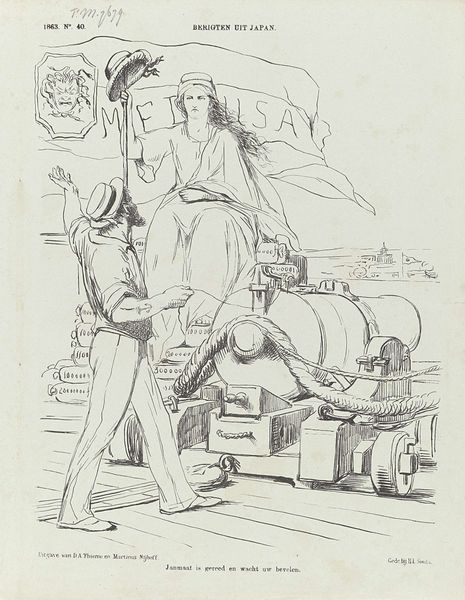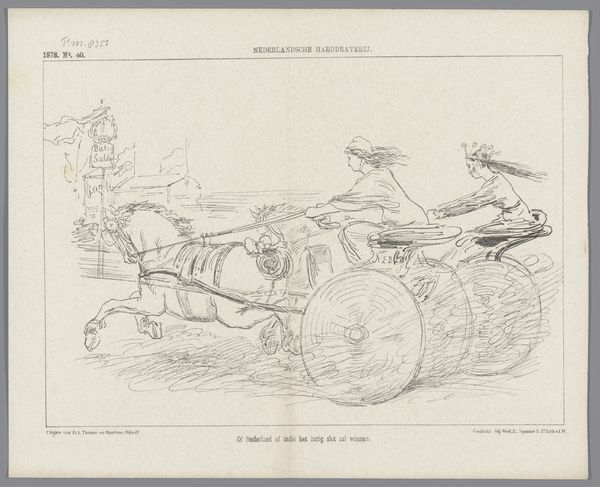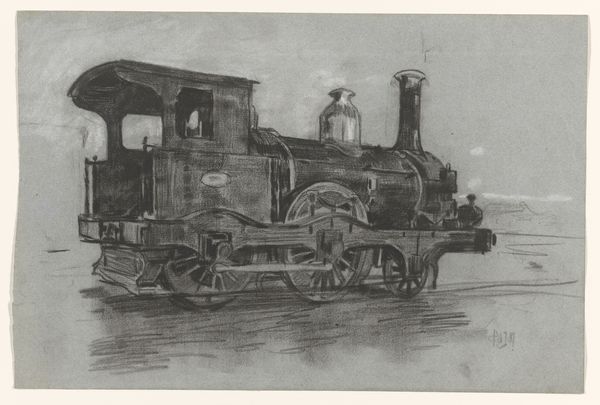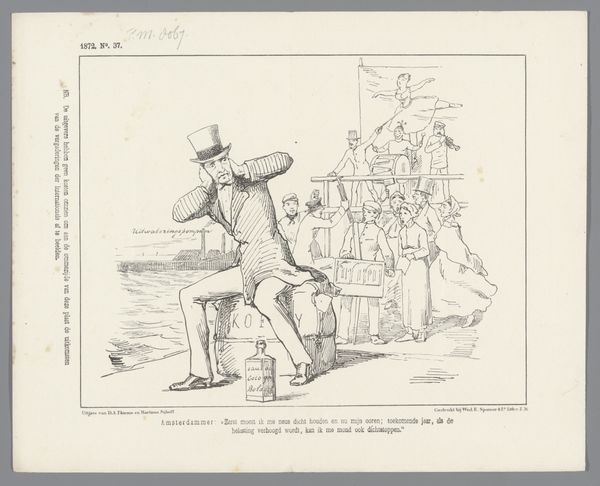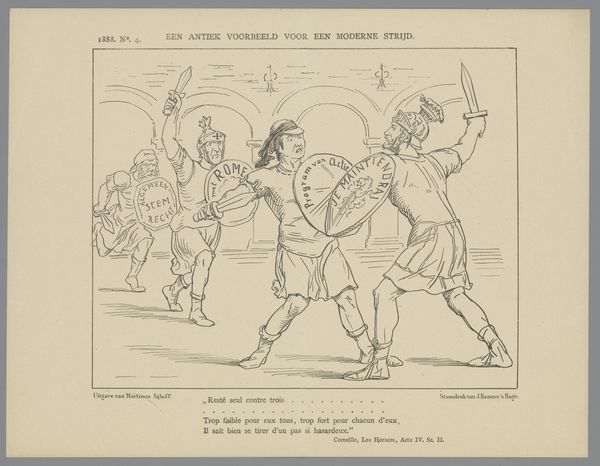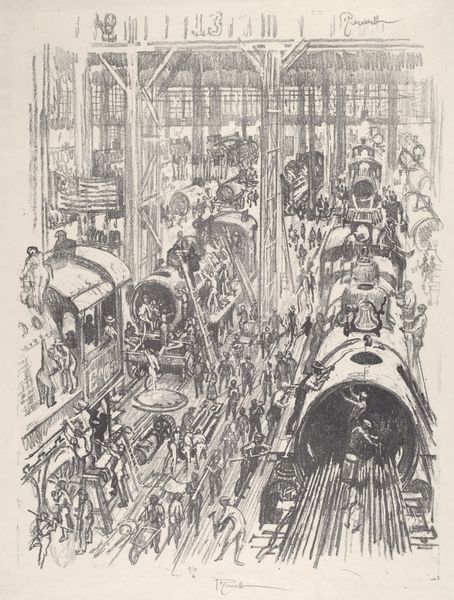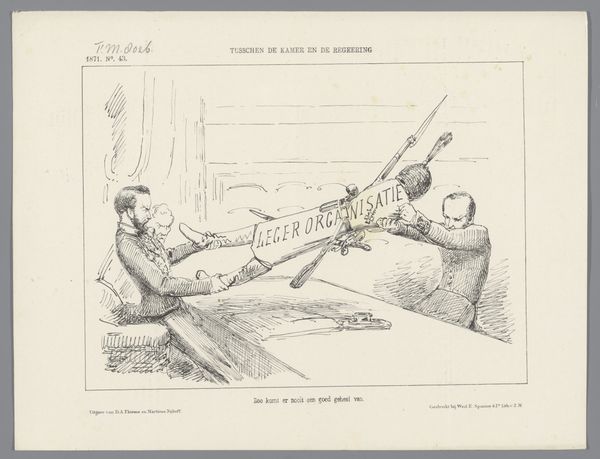
Spotprent op het gelijktijdig indienen van een wetsontwerp op de spoorwegen door Heemskerk en Kappeyne, 1875 1875
0:00
0:00
print, engraving
#
narrative-art
# print
#
caricature
#
cityscape
#
history-painting
#
engraving
Dimensions: height 215 mm, width 275 mm
Copyright: Rijks Museum: Open Domain
Editor: Here we have Johan Michaël Schmidt Crans's "Spotprent op het gelijktijdig indienen van een wetsontwerp op de spoorwegen door Heemskerk en Kappeyne," an engraving from 1875. It features two figures atop cartoonish locomotives... it’s quite a peculiar image. How do you read the imagery, especially considering the political context? Curator: Well, the trains immediately speak to the industrial revolution and its impact on Dutch society. But it's not just about technological advancement; the print is overtly political, deeply embedded in the debates surrounding railroad legislation and ministerial power in the 1870s. Note how one train bears destinations like "Haarlem," "Middelburg" and even "Leeuwarden" whilst the other says only 'Cabinet' and they proceed in a collision course. What statement do you think the artist is trying to make here? Editor: Perhaps he’s highlighting the potential dangers or clashes inherent in merging political ambitions with infrastructure development? The trains seem like metaphors for competing factions. Curator: Exactly. This image needs to be analyzed within the socio-political context of the period, specifically the struggles surrounding railway construction and the influence of various political groups and individual cabinet members, Heemskerk and Kappeyne as indicated by the title. How do you see this artwork functioning in public discourse at the time? Editor: I imagine it was quite effective. The caricature style and accessible symbolism likely made the political commentary easily digestible for the broader public. Curator: Precisely, functioning as a potent form of visual rhetoric within the public sphere, shaping and reflecting public opinion. It encourages us to investigate how societal factors influence art. It shows how railroads went from a neutral societal advancement into a polarized debate where sides had to be taken and potentially be ‘unsafe’ while in friendly partnership. Editor: It’s interesting to consider the multiple layers of meaning embedded in what at first appears to be a simple caricature. I definitely have more food for thought about the public role of art.
Comments
No comments
Be the first to comment and join the conversation on the ultimate creative platform.
